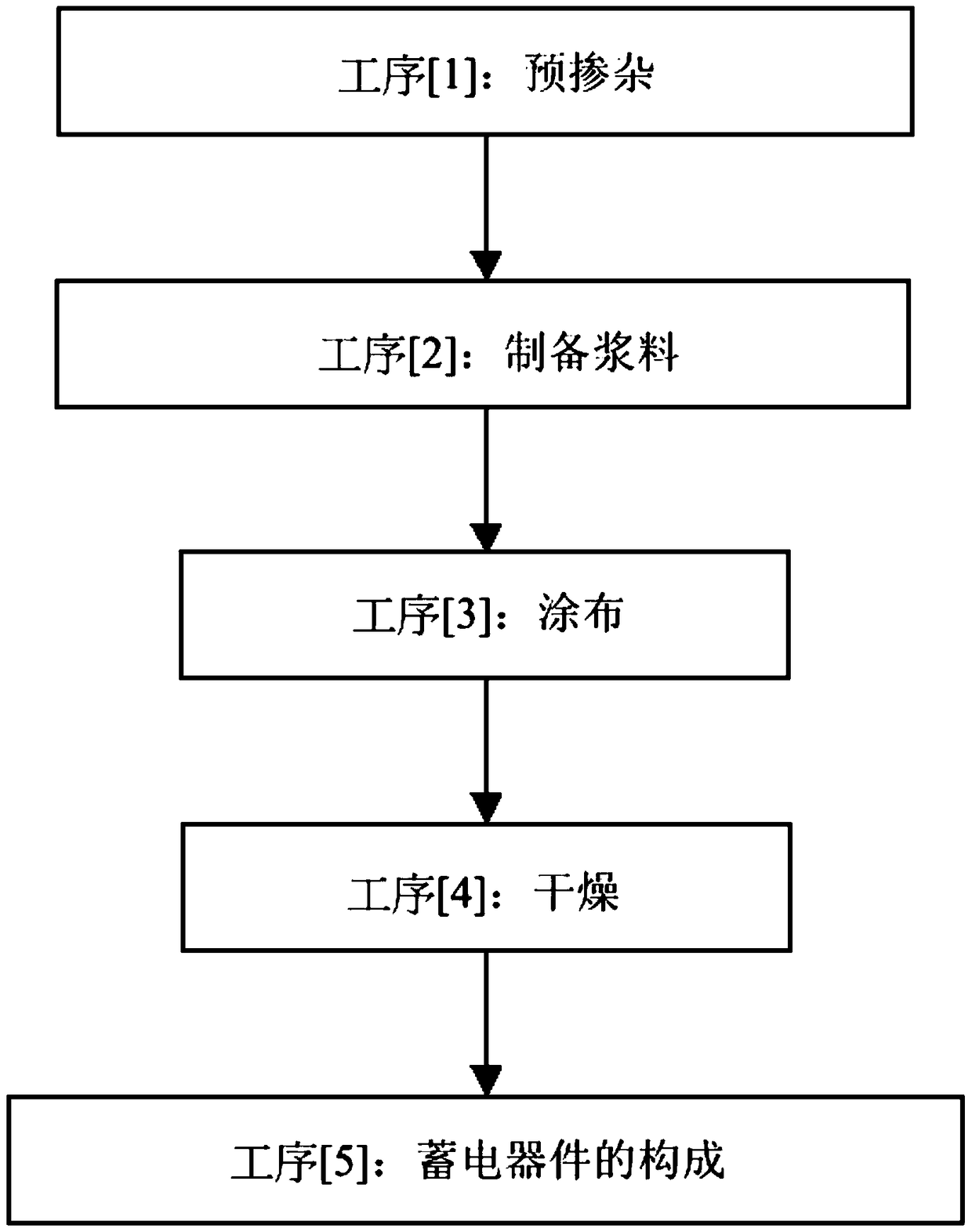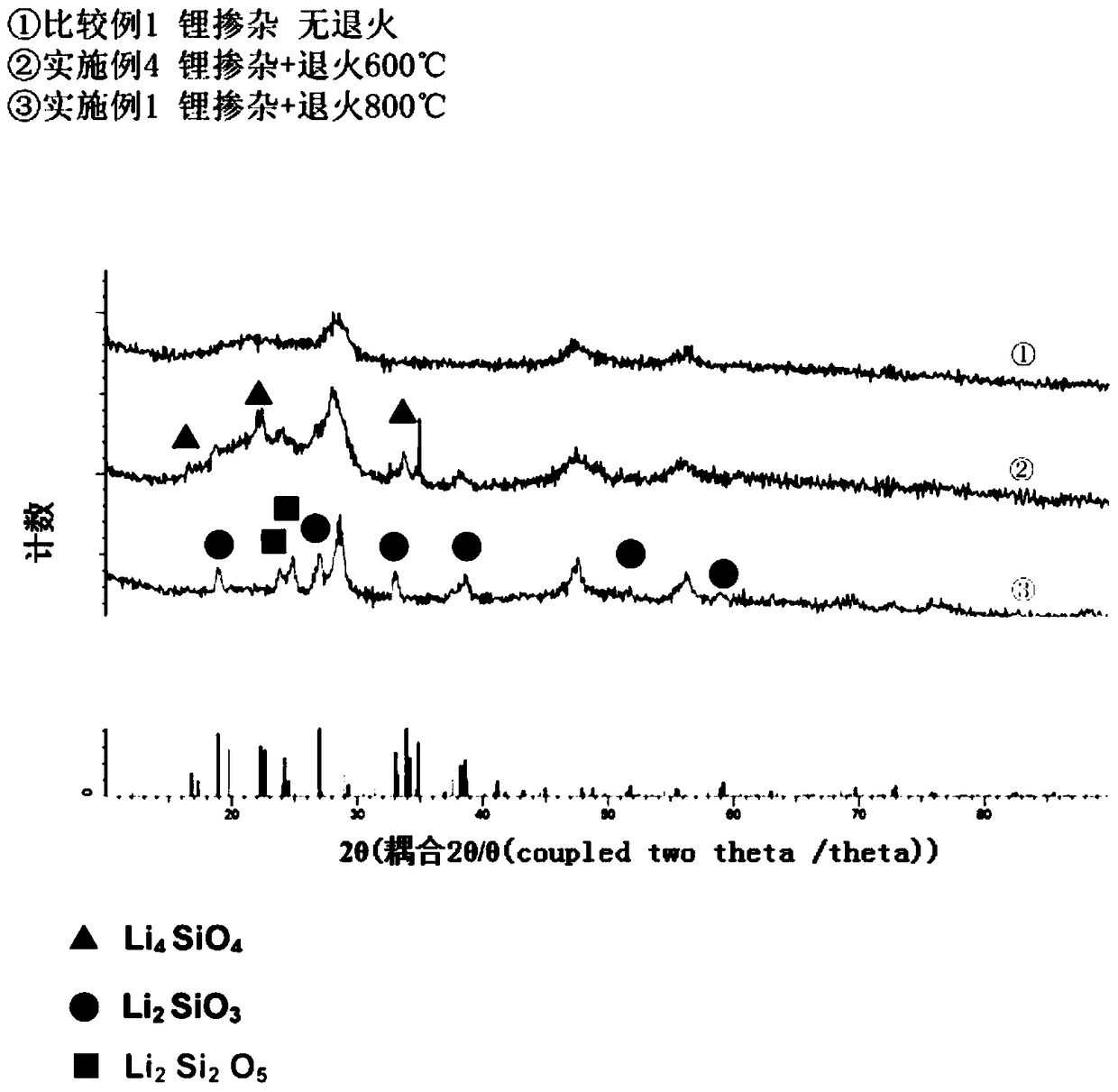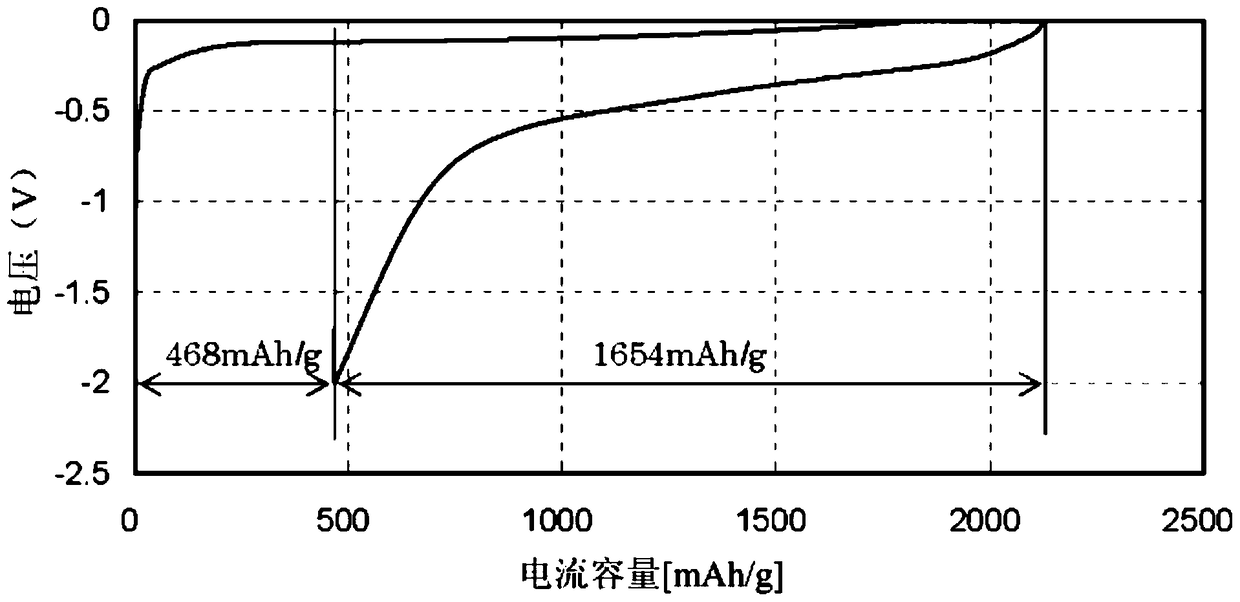Negative electrode material for electricity storage device, electrode for electricity storage device, electricity storage device, and their manufacturing method
A manufacturing method and negative electrode material technology, applied in the direction of non-aqueous electrolyte battery electrodes, battery electrodes, electrical components, etc., can solve the problems of a large number of lithium-containing reagents, damage to the material structure, and long time, and achieve the effect of improving the initial charge and discharge efficiency
- Summary
- Abstract
- Description
- Claims
- Application Information
AI Technical Summary
Problems solved by technology
Method used
Image
Examples
Embodiment 1)
[0199] In an argon drying oven with moisture below 1ppm, prepare a Si-based material that can be doped with lithium (a silicon oxide represented by SiOx (x=1.02) with an average particle size of 5 μm is coated with 5% by weight (wt) % Carbon material) 0.75g, Vapor-grown carbon fiber (VGCF manufactured by Showa Denko K.K.) 0.1g As a conductive material, ethylene carbonate and γ-butyrolactone (weight ratio: 20 :80) of mixed solvent 0.74g, and mixed with a mortar.
[0200] A lithium metal foil with a thickness of 0.03 mm was cut into a square with a side length of 10 mm, and about 0.024 g was added to the obtained clay-like mixture, and kneaded and mixed while kneading. After the lithium metal completely disappeared, the next lithium metal foil was added, and a total of 0.15 g of lithium metal was kneaded and mixed (corresponding to 760 mAh / g relative to the weight of the Si-based material that can be doped with lithium). After the kneading and mixing were completed, the added l...
Embodiment 2~5)
[0213] In the same procedure as in Example 1, a mixture of ethylene carbonate and γ-butyrolactone (weight ratio: 20:80) was added to Si-based materials that can be doped with lithium and vapor-grown carbon fibers (VGCF manufactured by Showa Denko Co., Ltd.) Solvents, mixed using a mortar.
[0214] A 0.03 mm lithium metal foil was cut into a square with a side length of 10 mm, about 0.024 g was added to the obtained clay-like mixture, and kneaded and mixed while kneading.
[0215] This mixture was heat-treated at various temperatures (Example 2: 200°C, Example 3: 400°C, Example 4: 600°C, Example 5: 1300°C) for 5 hours.
[0216] After confirming the X-ray diffraction pattern of the heat-treated powder obtained in this way, broad peaks around 2θ=28.4°, 47.3°, and 56.1° attributed to the Si-based material that can be doped with lithium were observed, and it was observed that the peaks attributed to Li 2 SiO 3 , Li 2 Si 2 o 5 , Li 4 SiO 4 Peak. will belong to Li 2 SiO 3 1...
PUM
| Property | Measurement | Unit |
|---|---|---|
| boiling point | aaaaa | aaaaa |
| thickness | aaaaa | aaaaa |
| boiling point | aaaaa | aaaaa |
Abstract
Description
Claims
Application Information
 Login to View More
Login to View More - Generate Ideas
- Intellectual Property
- Life Sciences
- Materials
- Tech Scout
- Unparalleled Data Quality
- Higher Quality Content
- 60% Fewer Hallucinations
Browse by: Latest US Patents, China's latest patents, Technical Efficacy Thesaurus, Application Domain, Technology Topic, Popular Technical Reports.
© 2025 PatSnap. All rights reserved.Legal|Privacy policy|Modern Slavery Act Transparency Statement|Sitemap|About US| Contact US: help@patsnap.com



